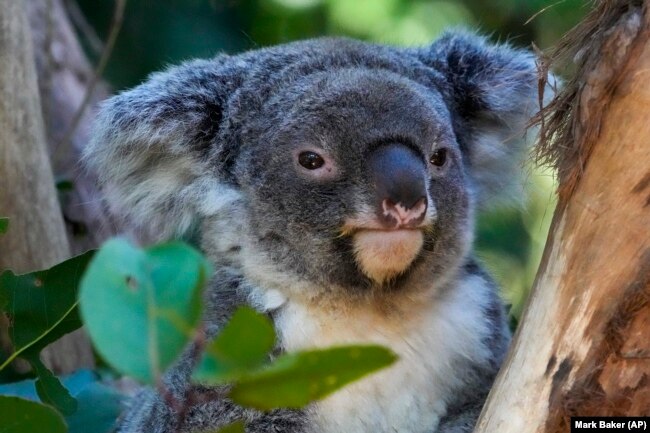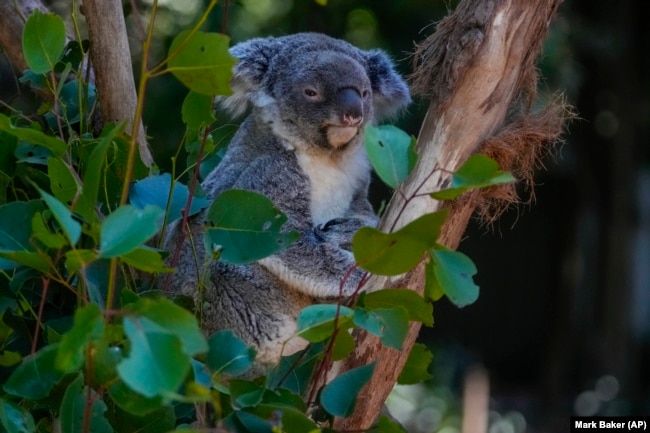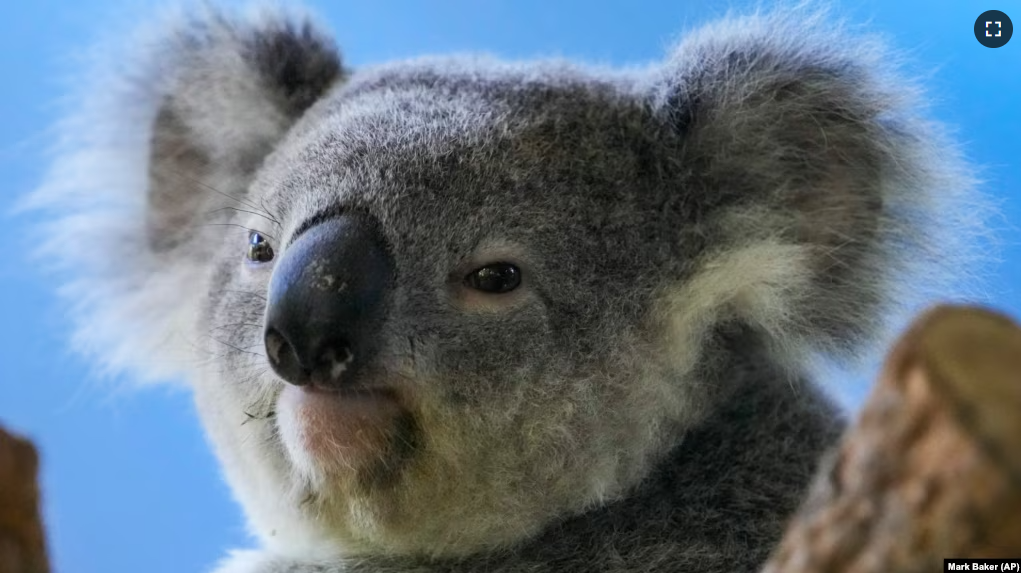Scientists have started vaccinating wild koalas against chlamydia in New South Wales, Australia. The disease causes blindness, infertility and death.
Samuel Phillips is a microbiologist at the University of the Sunshine Coast. He helped develop the vaccine. He said the disease is “killing koalas because they become so sick they can’t climb trees to get food, or escape predators, and females can become infertile.” An infertile koala cannot reproduce.
The scientists’ first goal is to catch, vaccinate and carefully follow around half of the koala population in the Northern Rivers area of New South Wales. That means vaccinating around 50 animals.
Researchers have already tested the vaccine on koalas in wildlife rescue centers. Those tests confirmed that the vaccine works and is safe to use.
To reduce infections and disease, scientists want to learn what percentage of the wild population needs vaccinating.
Scientists caught and vaccinated the first koalas in March. The effort is expected to last about three months.
Koalas in other parts of Australia are also infected with chlamydia. In Queensland, scientists estimate about half of the animals already have the disease.

To give the vaccine, the scientists put circular fences around the bottom of the trees in which the koalas feed. After a few hours or days, the koalas climb down from one tree to look for tasty leaves on another. Then they will wander into traps placed on the ground. The traps do not hurt the animals.
Next, the scientists check the animals, give them medicine to prevent pain from vaccination, and give the vaccine. They watch the animals closely for 24 hours to check for problems. They also put a pink spot on the backs of the animals. This lets the scientists know which animals have already been vaccinated.
Most of the time, koalas eat and sleep in eucalyptus trees. Their population has greatly decreased during the past 20 years. Last February, Australia’s government put koalas in the eastern regions of New South Wales, Queensland and the Australian Capital Territory on a list of endangered species.
Disease, loss of areas to live, and road crashes are all making it more difficult for koalas to survive. A 2020 study from the New South Wales government found that koalas could become extinct by the year 2050.

Scientists think koalas may have gotten chlamydia from contact with feces from infected sheep or cattle. Doctors use antibiotics to treat the disease in humans. But koalas have a special enzyme in their stomachs that prevents the antibiotics from working.
Mathew Crowther is a conservation biologist at the University of Sydney. He has been observing koalas in New South Wales for over 10 years. In 2008, 10 percent of animals tested there were infected with chlamydia. Today that rate is 80 percent.
He said it is rare to see any baby koalas in the area.
Around the world, there have been very few other projects to give vaccines to wild animals.
“Vaccination for wildlife is certainly not routine yet,” said Jacob Negrey, a biologist at Wake Forest University School of Medicine. He added that biologists are trying to learn if vaccination of wild animals should increase.
I’m Andrew Smith.
Christina Larson wrote this story for The Associated Press. Andrew Smith adapted it for VOA Learning English.
__________________________________________________________________
Words in This Story
predator -n. an animal that hunts and eats other animals
wander -v. to move from one place to another without a particular direction or destination
region -n. a geographical area
species -n. a set of plants or animals whose members have the same main characteristics and are able to breed with each other
extinct -adj. describing a species that no longer exists
feces -n. solid waste expelled from the bodies of animals; excrement
conservation -n. the act of preserving animals and natural areas from overuse or destruction
routine -adj. done in a habitual manner
